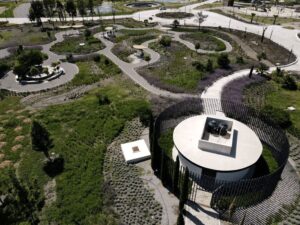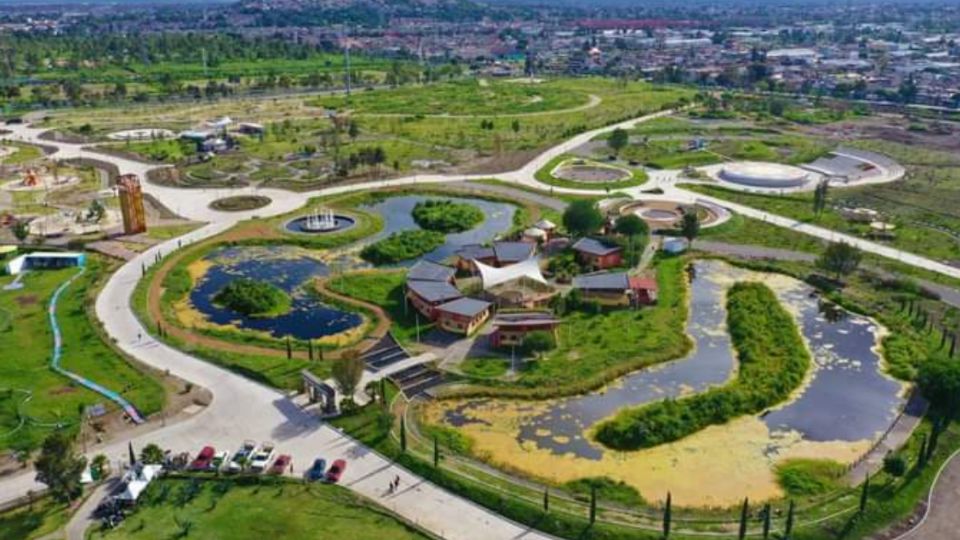One of my (Storm Cunningham) absolute favorite cities in the world is Mexico City, where my wife and I have spent many months over the past 30 years.
Mexico City has long had one of the world’s largest and best subway systems, and more recently became a leader in BRT (bus rapid transit).
On Sundays, the most beautiful and important avenue in the city becomes a huge, linear park for pedestrians and bicyclists only.
 Now, they have a program called Sembrando Pargques (Sowing Parks) to increase public greenspace.
Now, they have a program called Sembrando Pargques (Sowing Parks) to increase public greenspace.
The newest success of this program is Cuitláhuac Park, located in the eastern part of the city.
Cuitláhuac Park was constructed using 85% recycled materials from a former garbage dump.
This comprehensive project encompasses environmental, architectural and urban elements, and features the use of rainwater for urban sustainability (much needed in the dry, high-altitude air of Mexico City).
The project has recreated wetlands which used to thrive here, and that have now restored local flora and fauna.
The wetlands have also improved water and air quality, and boosted climate resilience by reducing the risk of flooding.
Pollinator gardens have been planted, which will help to capture CO2, produce oxygen, increase humidity, and revive butterfly and bee populations in the area.
Featured photo courtesy of Parque Cuitlahuac Oficial.

